All products featured are independently chosen by us. However, SoundGuys may receive a commission on orders placed through its retail links. See our ethics statement.
Bose Sleepbuds review: Drown out that hum in your 'drum
July 19, 2018
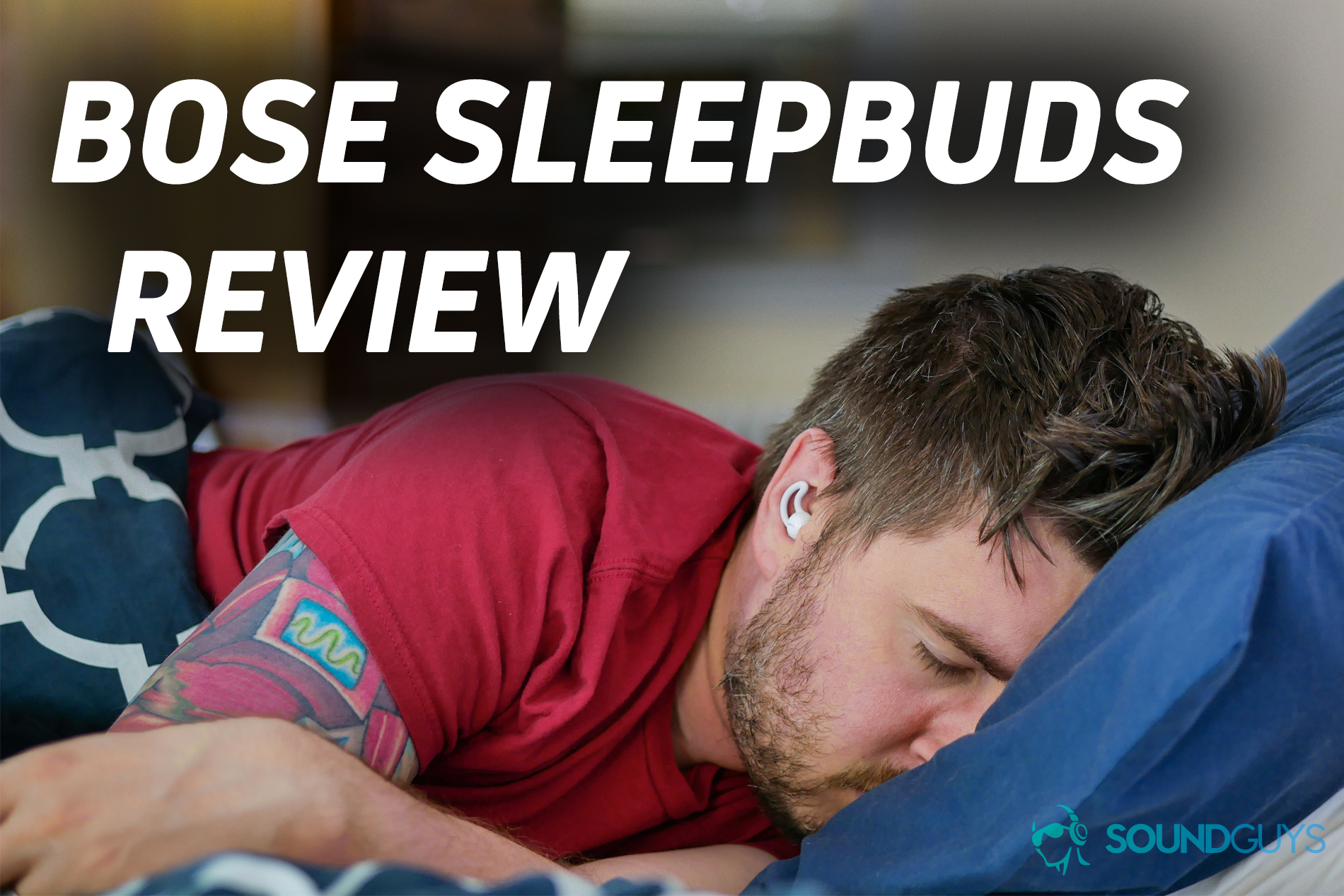
If you’ve got tinnitus, getting to sleep is just one of those things that never really gets easier with time. While we’d all like to envision ourselves to be the protagonist of Baby Driver, those afflicted with tinnitus or a noisy sleep environment are generally tired wrecks during the day. That’s where the Bose Sleepbuds come into play. These don’t play your music, so if you’re looking for Bose headphones, look elsewhere.
What are the Bose Sleepbuds?
In short, this product is designed people who just can’t get to sleep without some added noise help. Bose created a set of truly wireless earbuds that exist to drown out the air conditioner, tinnitus, or really any unwanted noise around you. Earplugs alone aren’t up to the task if you have tinnitus, so this is a one-size-fits-all solution for insomniacs out there.
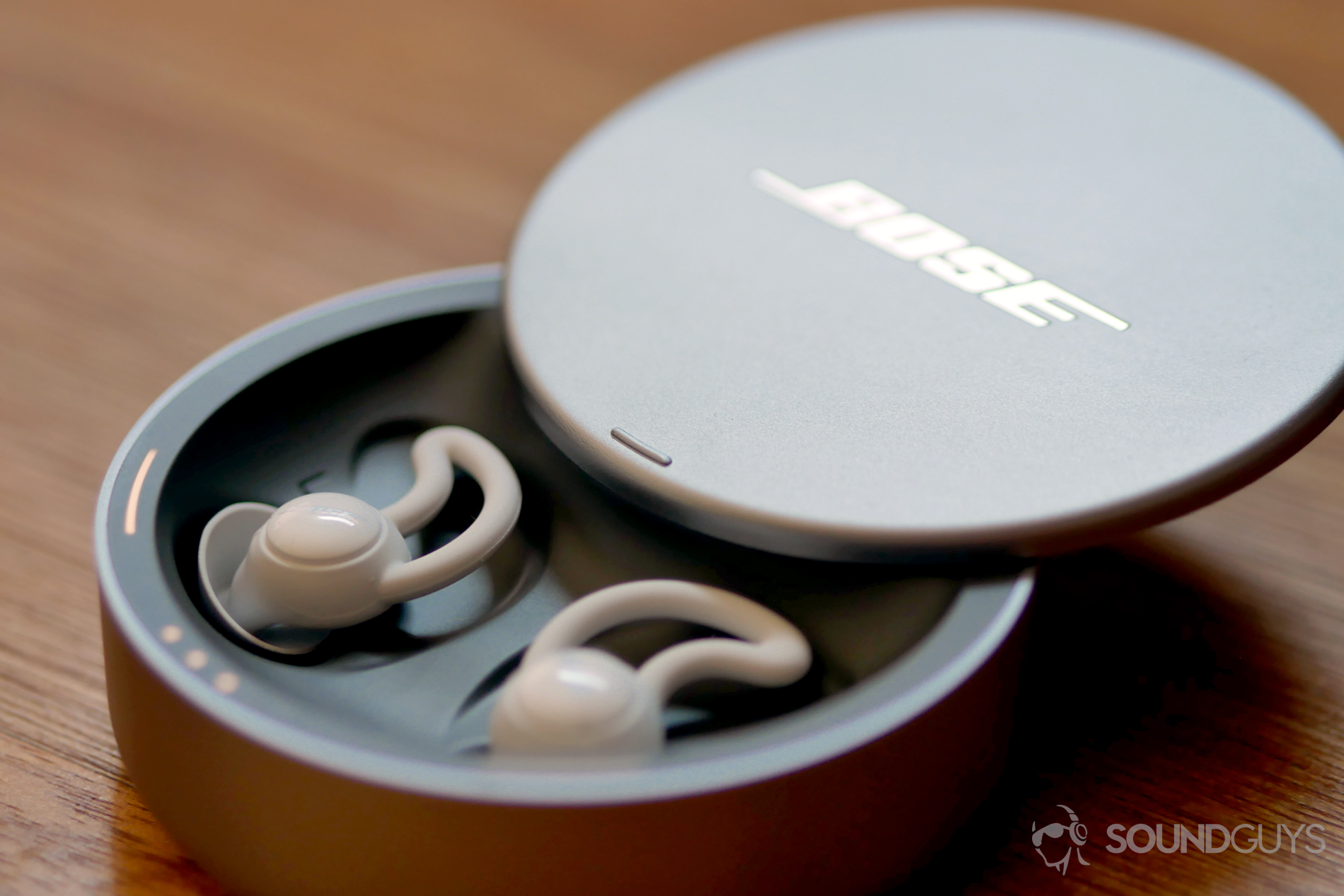
Unlike other truly wireless earbuds, they aren’t built to listen to music as you sleep, no: they only work with the Bose Sleep app. There, you can choose between a number of ambient recordings for you to zonk out to. Basically, a white noise machine that won’t annoy your partner (or downstairs neighbors).
While I would have preferred some sort of noise-canceling or more effective isolation, I understand why this was impossible. Basically, it’s all about comfort: having little earbuds jammed deep in your ear canal can be distractingly uncomfortable, so Bose elected to not risk poking your sensitive ear bits with a large nozzle. The buds will sit just outside your ear canal, held in place by a helix fin so they don’t fall out if you toss and turn.
How do the Bose Sleepbuds work?
Billed as a set of noise-masking earbuds, the Bose Sleepbuds do not offer any noise cancellation or a very high level of isolation. Instead, they play ambient sound recordings from a campfire to a rainy day to drown out the world around you, which can be a very risky thing to do. However, this particular product manages its output well, as I’ll outline below. It will not damage your hearing due to noise exposure on its own.
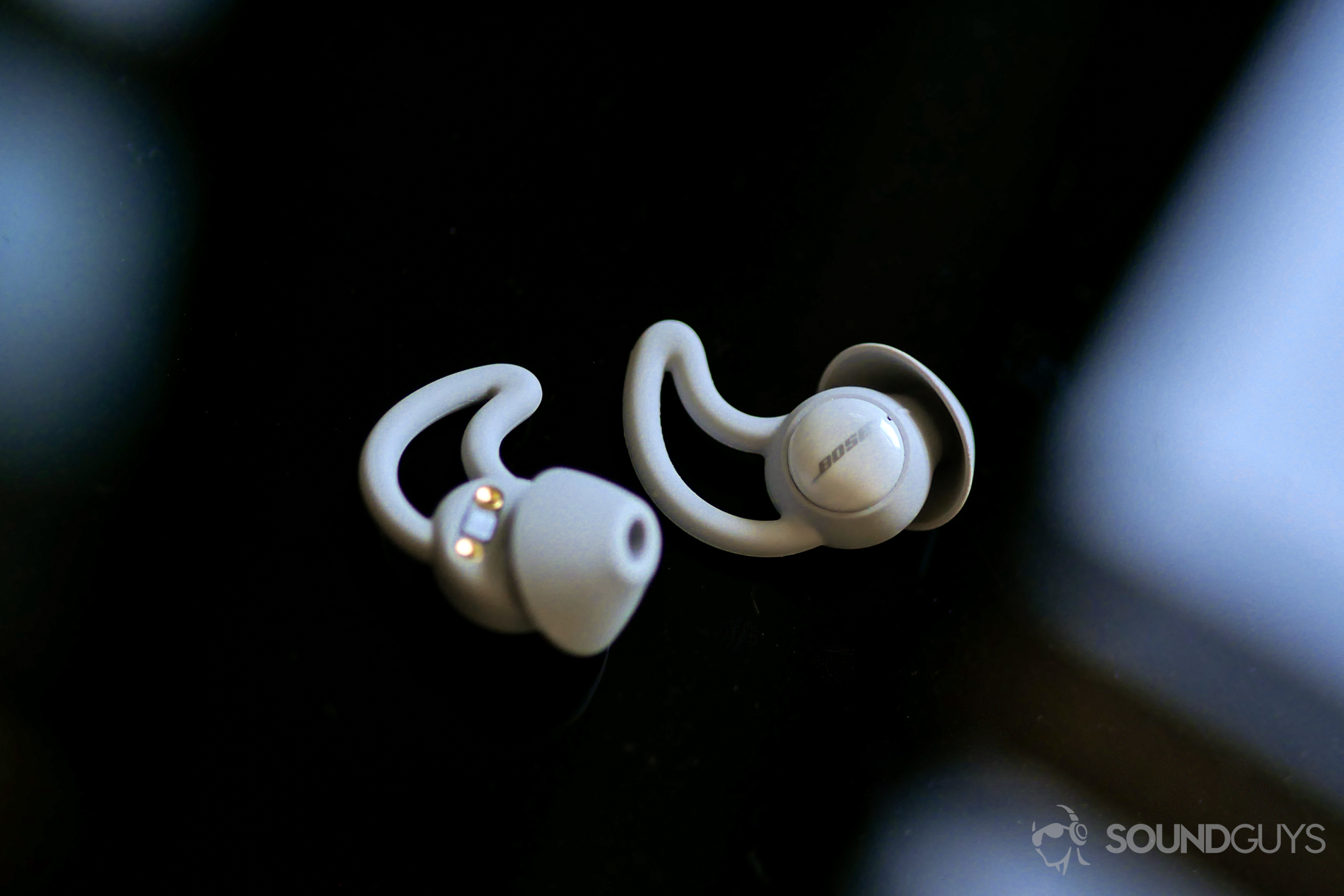
When people talk about a sound “drowning out” another, they’re really referring to a phenomenon called auditory masking, where your brain (and ears) will prevent you from perceiving quieter sounds with similar notes. If there’s a louder sound (a masker), you won’t hear quieter sounds that you’d normally get annoyed by.
As you can imagine, this is the least-preferable method of dealing with unwanted noise, as it stands the highest likelihood of damaging your hearing. However, any issue can be avoided if the total sound pressure level (SPL) that reaches your eardrum remains under 80dB. Considering the ear tips physically block some sound already, the Bose Sleepbuds aren’t as dangerous to your long-term hearing health as you might expect.
Do the Bose Sleepbuds work well?
While it’s hard to objectively assess new product categories as they arise, the Bose Sleepbuds weren’t actually all that challenging to pin down. Considering their entire purpose is to drown out sound, there’s only a few things we need to figure out:
- Can they mask normal apartment sounds?
- Are they safe to use?
- How long is the battery capable of lasting?
With this in mind, I was able to test these using an air conditioner at full blast, a test head, and some time. For the most part, this product works as advertised—with little else to discuss. The Sleepbuds mask out enough normal sounds to work as intended. If for whatever reason you’re unable to block out the noise around, you: that’s a serious problem that needs direct address. This product is designed to be safe to use, and if the sound levels around you are so high that they can’t be used effectively, you’re likely already in danger of hearing loss without them.
It may seem a little useless to point out, but the Sleepbuds can only drown out so much noise. While that may annoy you, it’s for the best—otherwise they’d be unsafe to use.
Are the Bose Sleepbuds safe to use?
More or less.
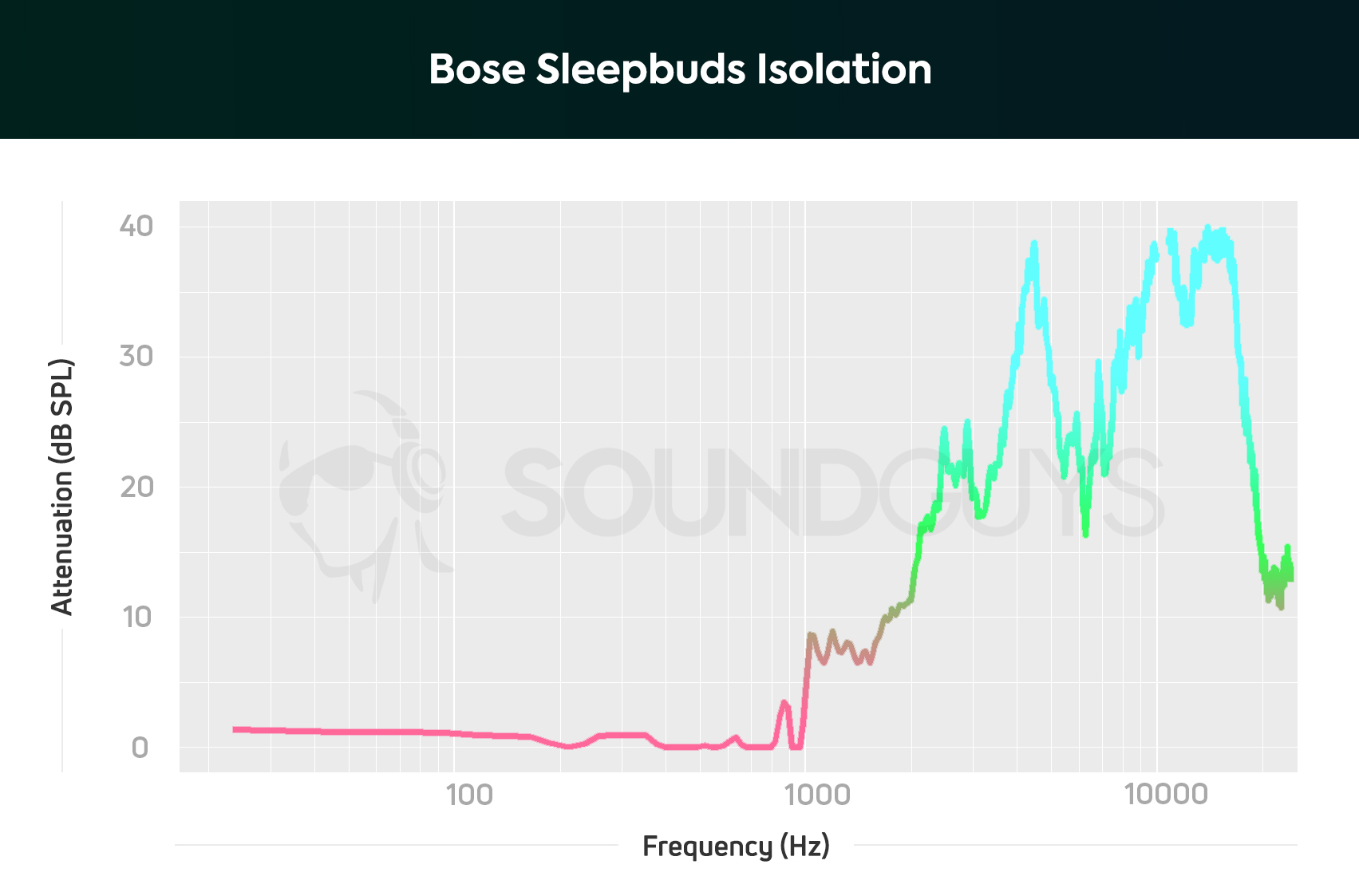
The Bose Sleepbuds do a fairly commendable job blocking our high-frequency sound, but they do almost nothing to physically isolate you from the low hum of the air conditioner, airplane, or a truck idling outside your damn window (thanks, road crew). However they do manage to block out super high notes and sounds out surprisingly well, even though it’s tough to get a good seal. This product definitely leans on drowning out low-frequency sounds with its loudness.
If you do nothing but increase the force applied to your ears, you risk damaging your hearing by something called Noise-induced hearing loss (NIHL). While my testing revealed a higher peak SPL than what Bose advertises, I also pushed the limits of this product to see how bad the noise situation could be. Even when putting the test fixture next to a loud air conditioner, the simulated ear drums never saw a sound pressure level over 80dB.
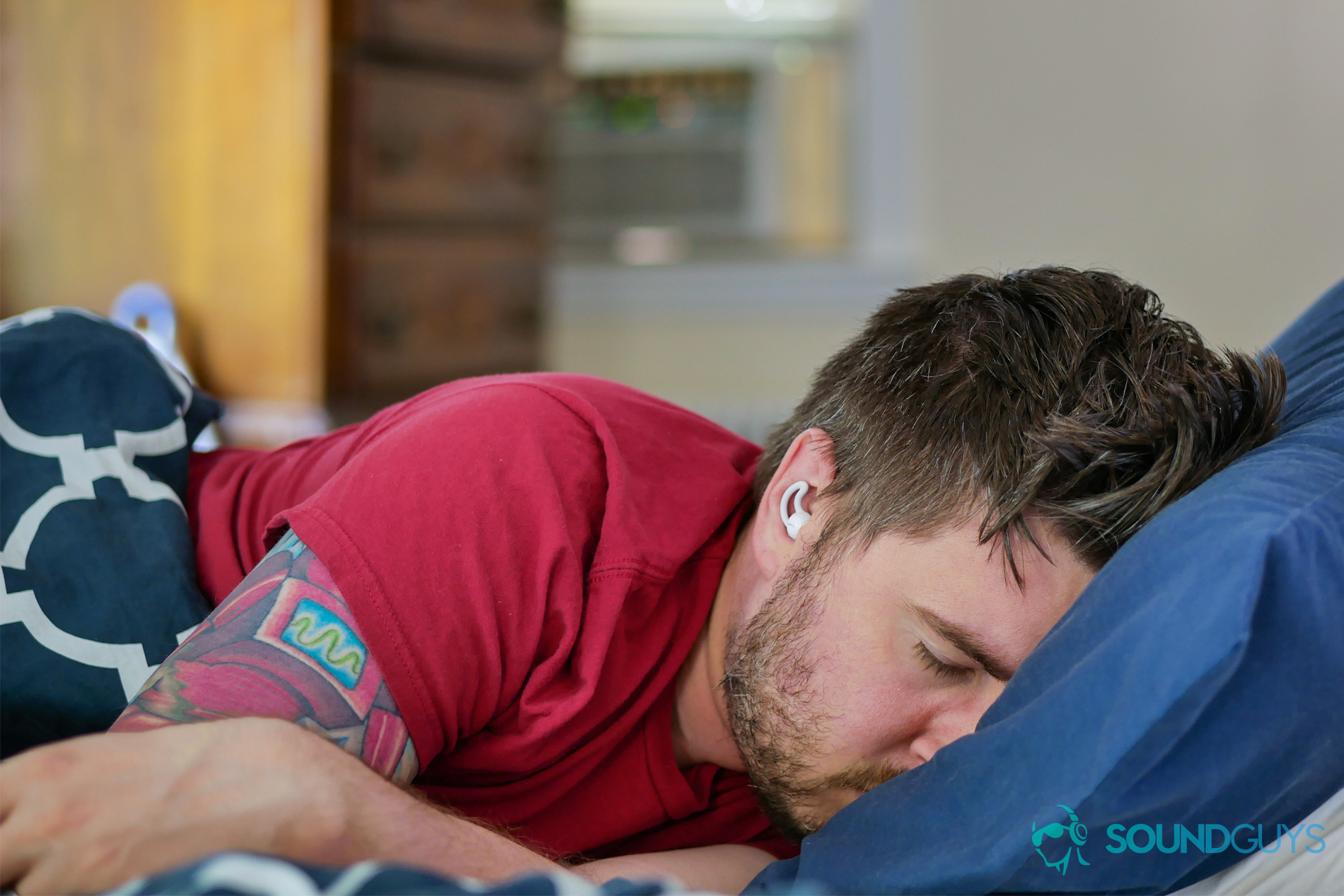
However, the Sleepbuds on their own cannot damage your hearing. I know because I measured their peak dBSPL at roughly 74dB, which is solidly shy of the level needed to cause hearing damage at an exposure of 8 hours. Considering it would take decades of exposure for 8+ hours every day for that level to cause hearing damage, it’s safe to say that this product is unlikely to harm you. Not impossible, but extremely unlikely.
How long does the battery last?
Because this product relies on being able to be used for an entire night, they elected to eschew ANC and modern lithium batteries in favor of noise-masking and silver-zinc batteries. By reducing power requirements and opting for a lower-output cell, the Sleepbuds can last a whole lot longer than traditional truly-wireless earbuds. Even if you blast them at full volume, they should last you most of the night.
At max volume, the Bose Sleepbuds last 15 hours and 2 minutes
Like most other truly wireless earbuds, the Sleepbuds are charged and stored in a battery case with a brushed metal exterior. When charging, the buds are held in place magnetically, and should be good to go after 8 hours. While that’s a super long time to charge, the benefit is you get a super-long battery life as well. As long as you put the buds back in the case when you wake up, these should be ready early enough for a post-work nap if you need it.
At max volume, the Bose Sleepbuds last 15 hours and 2 minutes before one channel disconnects from the other. I didn’t even bother testing at 50 percent because nobody needs to sleep that long, and I love sleeping late. If you keep the volume under the recommended limit, you could probably squeeze a couple days’ use out of these. Due to the nature of the product itself, we don’t ever see someone using it at minimum volume. You need volume to drown out noise, right?
Should you buy the Bose Sleepbuds?
At the end of the day, this is an expensive, specialized product. While it does exactly what it’s supposed to do, I have to imagine that there’s got to be a competing solution for a little less money. Then again, it’s hard to put a price on good sleep. If you don’t have tinnitus, you can look into ear plugs, but those can be uncomfortable—and hurt when you toss and turn at night. Additionally, regular foam earplugs generally don’t isolate much more than 10dB.
If sleep-assisting earbuds become a product category, Bose’s Sleepbuds are currently the gold standard.
Thank you for being part of our community. Read our Comment Policy before posting.